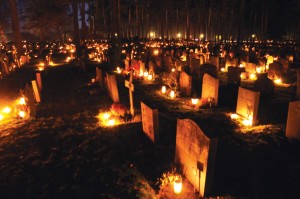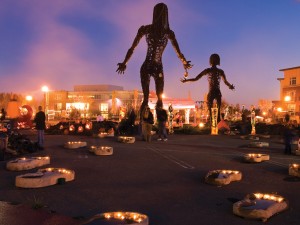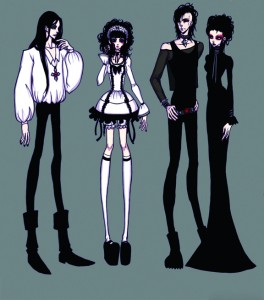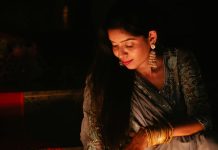 Have you ever seen a ghost when you were younger? Gotten that creepy feeling while staying at a dark, eerie old house that someone… or something… was watching you? You must certainly have heard stories from your friends about their ‘real-life’ ghost experiences. You may even know of some who were traumatised by their supernatural experiences till the end of their lives.
Have you ever seen a ghost when you were younger? Gotten that creepy feeling while staying at a dark, eerie old house that someone… or something… was watching you? You must certainly have heard stories from your friends about their ‘real-life’ ghost experiences. You may even know of some who were traumatised by their supernatural experiences till the end of their lives.
The concept of malevolent spirits has taken root in our cultural imagination and forms an essential part of horror movies, gothic stories, books and even TV shows. With advances in science, there are ‘ ghost-busting’ shows that explore the most-haunted places in the world with sophisticated technology that some claim can detect spirits floating around in the physical plane.
Why this obsession with the occult, one may ask? Is it a result of centuries of belief, impossible to dispel even with the advent of modern science? Is it simply fun and games when kids call ghosts and spirits together or does this affect their psyche at a deeper level? Is there any scientific truth to this kind of observed phenomena? Read on as we investigate the various roles that spirits play in our and other cultures and take a deeper look to separate reality from our collective cultural imagination.
Cultural Memories
Cultures all over the world believe and speak of spirits that walk the plane we live in after death. Of course, today in the West these are regarded as fun holidays rather than serious religious events. The ‘Hungry Ghost Festival’ is a traditional Chinese festival where ghosts and spirits of ancestors ascend from lower levels. Giving tribute to one’s ancestors is common as well as releasing lanterns on water to give directions to lost spirits. In India, belief in the existence of troubled spirits is common, though some believe that ancestors can only enter our plane of reality from the underworld during the new moon. The ‘Mahalaya Amavasai’ is a two-week festival where many rituals occur to appease one’s ancestors.
Many other cultures also believe that the spirit realm enters our realm on a certain day of the year. Festivals such as the ‘Day of the Dead’ in Mexico and the Christian festival of ‘All Hallow’s Eve’ or ‘Halloween’ have incorporated pagan festivities and beliefs for centuries past to honour the dead. In Taiwan, the ‘Ghost Month’ actually goes on for an entire month! Residents believe that ghosts haunt the entire island for this duration.
The idea of spirits has been in oral folklore and in written texts for centuries. Our current imaginations of ghosts are often mired in myth and multiple retellings of stories that build on each other. Haunted areas instil a sense of fear – a touch of the gothic ‘sublime’ – of all that is unknown and thus terrifying in the world. From horror movies and TV shows to Steven King novels, ghosts and possession by them are an essential part of our horror-loving culture.
 Exorcism and Ghost Busters
Exorcism and Ghost Busters
Thanks to superstitions and lack of awareness on the subject in India, people with real medical conditions such as epilepsy and schizophrenia are thought to be ‘possessed’ by their relatives. Talking in strange tongues, hearing voices and seeing things that are not there could be signs of mental illness. But if it’s considered to be a haunting or possession, then there is a solution – an ancient ‘ghost fair’ that takes place in Madhya Pradesh. Over 200 witch-doctors and priests gather together in this unique event. Here, the haunted and possessed are sometimes beaten mercilessly to cure their ailments. One witch-doctor comments on his treatment, “Ghosts need a firm hand.”
More modern ghost-busting shows take place with the TV Show, India’s Most Haunted, where presenters Rocky Singh and Mayur Sharma explore the scariest places in India to confront and face their own fears and beliefs in the supernatural. Together, they explore our lingering stories about the supernatural, talking to locals about their experiences and trying to come to terms with the stories they hear. Although they didn’t encounter spirits of the ‘other’ kind in the first season, they had enough ‘spooky’ experiences to put them off from running the second season of the show. Sharma says, “It was stressful for me as we shot in numerous spooky locations. I didn’t want to get a heart attack.” However, thanks to tourists looking for a ‘heart attack’, horror tourism is raking in the moolah!
Horror Tourism – India’s Most Haunted!
Places all over the world that have witnessed some traumatic event in history have cashed on the horror-tourism trend thanks to our fear of the supernatural. Haunted tours are common in most amusement parks, where monsters jump out at you through dark corners. Ghost tours take places in abandoned castles, palaces, catacombs and even in the chawls of Mumbai. Pictures of ghosts at ‘haunted’ areas routinely surface on the Internet. Ghost tourism rakes in millions of dollars worldwide!
The abandoned town of Bangarh in Rajasthan is famous around the world as the most haunted place in India. Even actor Daniel Radcliffe while shooting for his horror film, Woman in Black, came across it in his research. He said, “I wish I could personally visit the place and live my role of Arthur Kipps in real.” The town was created in the fourteenth century, and has been abandoned since the mid seventeenth century after a vicious famine hit the residents. There are several legends accounting for the spirits that haunt the town. A well-known legend concerns the beautiful Princess Ratnavati, who a local tantrik or magician fell in love with. She spurned him and had him killed. As he lay dying, he cursed the town and everyone in it. The local sightings of ghosts have reached such a crescendo that the Government of India had to take action. They have prevented anyone from entering the area at night! A sign on the outskirts warns all visitors to stay away: “Entering the borders of Bangarh before sunrise and after sunset is strictly prohibited. Legal action will be taken against anybody who does not follow these instructions.”
 Youth and the Horror Psyche
Youth and the Horror Psyche
Young people in particular tend to have a morbid fascination with the supernatural. As teenagers, we all had phases of ‘calling ghosts’ with various media. Bhashkar Krishnan says, “In college, we used an Ouija board to call a spirit. We all went to sleep thinking it was all in fun. The next day, one of my friends lost his mind. He was talking in some strange language and saying things in an agitated, violent manner. We made him sleep and prayed and thankfully he was fine the next day.” Many others have had similar experiences with long-lasting effects. Some even believe that calling spirits with the help of a guide allows one to clear away the negative effects in one’s life. Shweta Shetty had such an experience. A sceptic herself, she recounts her experience with a spirit about a decade ago. An astrologer called her family together to a séance where she lost consciousness. When she awoke, she was told that the spirit of her mother had entered her and talked about its unfulfilled wishes to family members. To this day, Shetty does not know what to make of the experience. Part of her believes that she was hypnotised, while another part of her thinks she had a real-life ghost experience.
With the overwhelming number of stories one hears from friends and families about their supernatural experiences, it seems almost enough to sway sceptics. But there is still part of the mind that questions and that searches for truth rather than titillating fiction. Is there an answer to the supernatural mystery that does not defy logic? Is it possible that people are hypnotised, that they are the victims of elaborate setups that will be exposed in a Scooby Doo ghost-busting show to be hoaxes? Well, people have been taken in by con-artists in the past and will be in the future. The truth of the matter is that we believe that spirits linger in the world because we want to believe it; we want to believe in an afterlife so we can meet our great-grandkids.
Volume 1 Issue 9




























